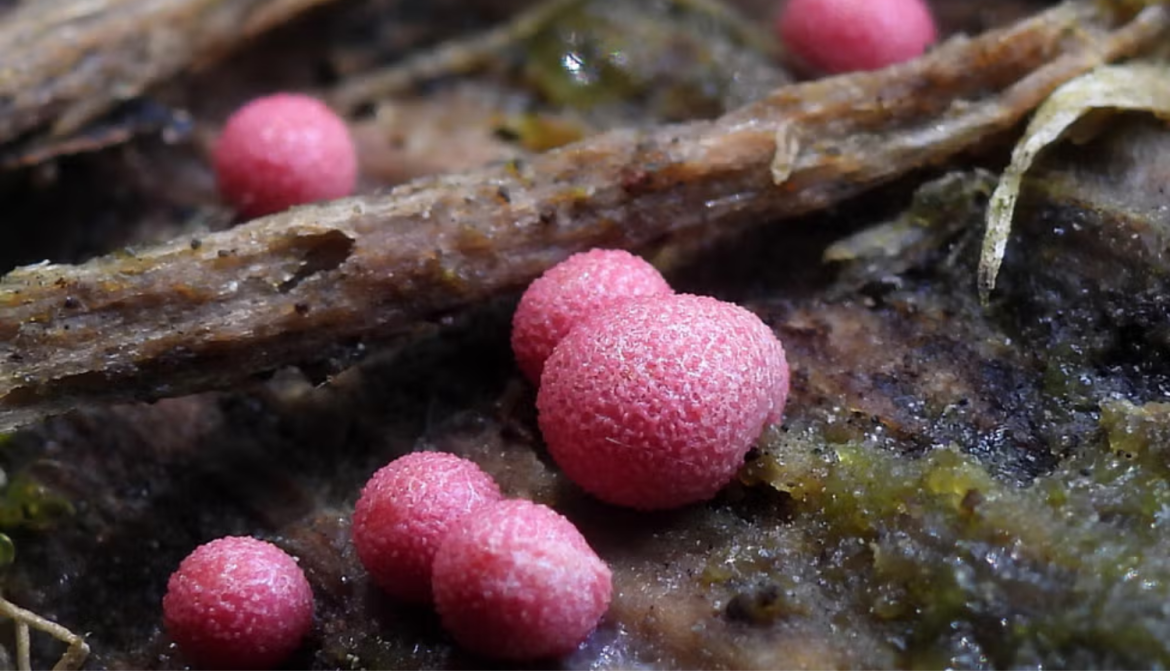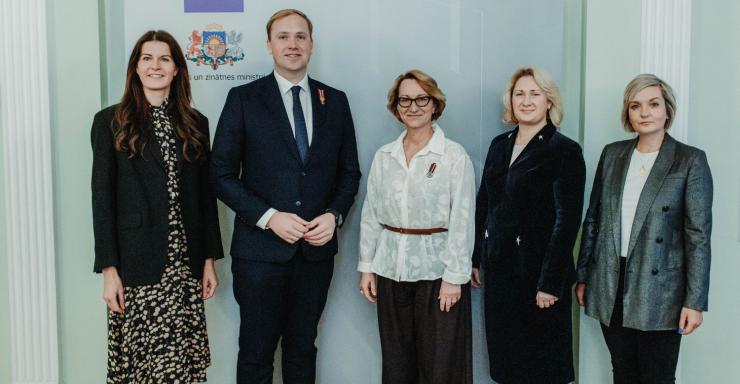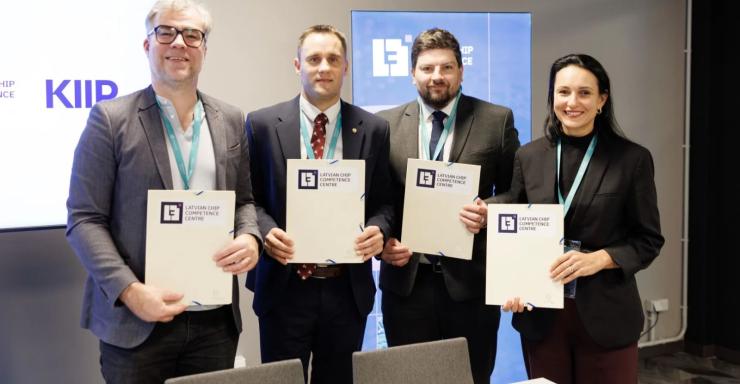On July 4, official information was published about a new, previously undescribed slime mould species - Lycogala persicum, which was collected in Ķemeri National Park by Julita Kluša. This marks a unique event in Latvian slime mould research and is one of the rare cases in the history of Latvian science where a new species has been described from a specimen found in Latvia and collected by a local observer, according to the Latvian Mycological Society.
The new species, Lycogala persicum, is a slime mould with small fruiting bodies measuring only 1-2.5 millimetres in diameter. In its early developmental stage, it forms bright, vivid pink fruiting bodies. When mature, it develops a uniquely textured surface with a dark pattern on a purplish background. Microscopically, it is notable for its pink oil droplets.

The type and holotype of the new slime mould were collected in Ķemeri, Latvia, on July 1, 2023, during an expedition by Julita Kluša.
While studying Lycogala species, Julita observed their incredible diversity. Although only a few species of this genus had been described until recently, she enthusiastically followed the research started by Ukrainian scientist Dmytro Leontyev and his team, who divided the genus into many new species.
Julita intentionally cultivated the specimen to maturity, performed microscopy, and compared the results with known species descriptions, using Leontyev’s 2023 publication on the first 15 new Lycogala species as a reference.
Not finding a match for her specimen, she proposed the hypothesis that it could represent a new species.
The Sample Was Sent for International Analysis
During the International Congress on Slime Moulds in August 2023, the sample was handed over to Leontyev for further analysis. In April 2024, DNA sequencing confirmed it as a new species to science.
Over a year passed before the official publication, as a single specimen is not sufficient to describe a new species. The known distribution areas of this species include Europe (Belarus, Latvia, Russia) and North America (Canada, USA). In total, the 2025 publication by D. Leontyev and co-authors describes 24 new Lycogala species, bringing the total number of species in the genus to 54. This number is expected to increase.
Lycogala persicum is described as a "beautiful myxomycete" that forms large, colourful colonies — an unusual trait for the Lycogala genus, whose species typically have small fruiting bodies. The species may be associated with boreal forests. Its full scientific name is Lycogala persicum.
A Big Moment for Latvia
This beautiful slime mould forms large colonies, which is quite unusual for Lycogala species, given that they typically have small sporocarps (2 mm). The young L. persicum sporocarps stand out with their vivid, almost "chemical" pink colour, which surpasses all other known members of the genus in intensity.
"I am both honoured and excited that the slime mould I discovered in Latvia has now been officially recognised as a new species in science. The species name even includes my surname, and this wonderful organism is my contribution to the exploration of slime mould diversity," says mycologist Julita Kluša.
To better understand slime mould distribution in Latvia, we encourage everyone to register their observations on the portal dabasdati.lv.
Photos and field stories about slime mould discoveries are welcome in the Facebook group "For Slime Mould Admirers and Researchers". The group aims to highlight nature's diversity and raise public awareness about these fascinating organisms - slime moulds, which are not fungi.
A comprehensive list of all known slime moulds in Latvia, including photos and brief descriptions of the species identified over the past 15 years, is available on the official website.


